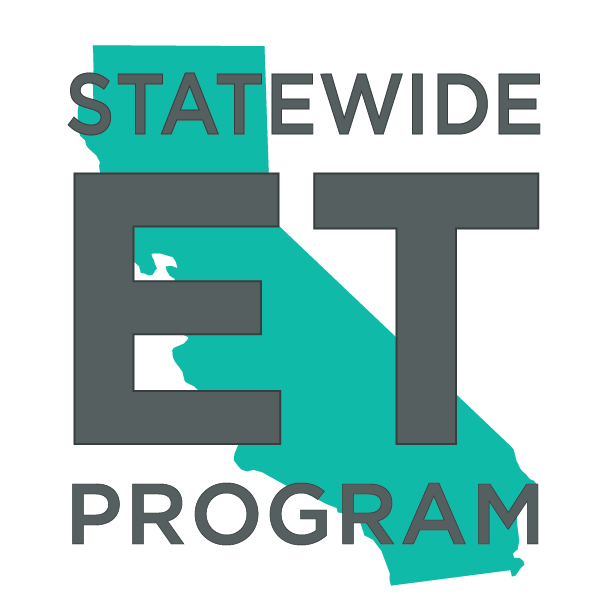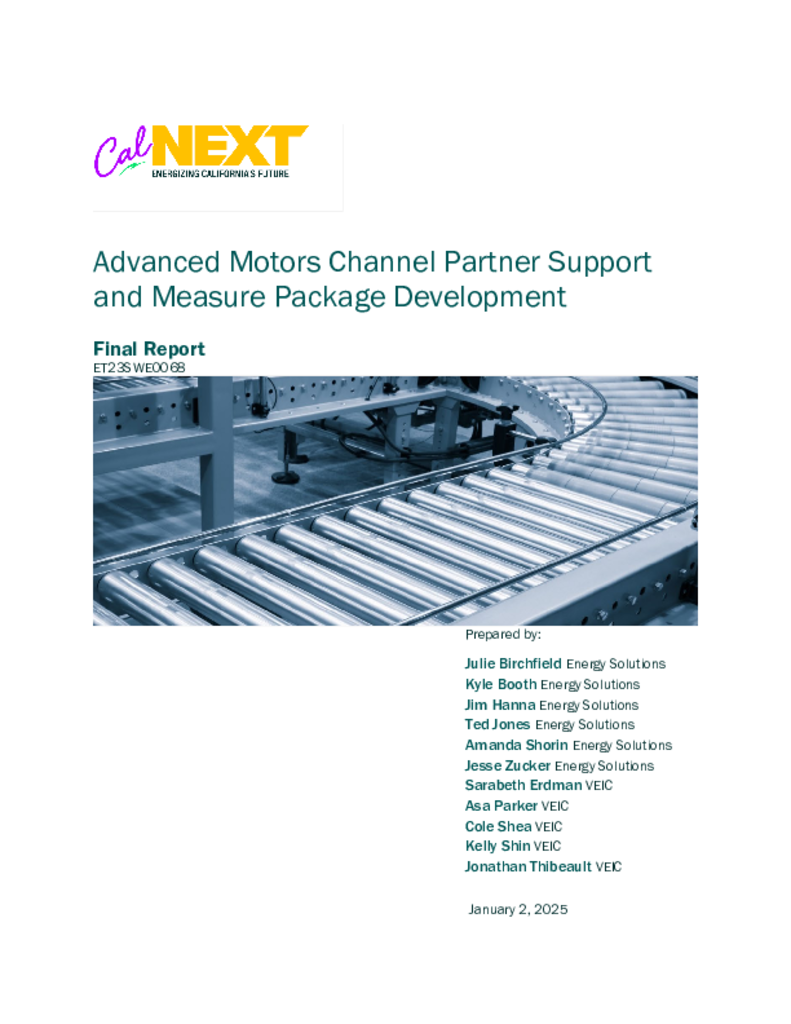ET23SWE0068 - Advanced Motors Channel Partner Support and Measure Package Development
Advanced Electric Motors in this pilot are defined as electric motors with energy efficiency levels above current federal conservation standards published by DOE in 2014, which encompasses those listed on the 2022 Focused Pilot TPM as well as additional advanced motor technologies .[1] The technologies encompassed within Advanced Motors include motor technologies with efficiencies greater than current federal minimum standards: switched reluctance motors, synchronous reluctance motors, permanent-magnet (PM), PM alternating current (AC) (PMAC) motors, PM synchronous motors (PMSM), and Brushless DC Motors (ECM motors). This pilot will address the non-OEM market, which focuses on motor replacements and retrofits in non-residential systems, with emphasis on variable torque motor-driven systems, such as pumps and fans. Through existing research, the following have been identified as primary barriers to the adoption in the non-OEM market:
1) Advanced Motors are seldom stocked by distributors. Product availability (both the quantity and diversity of motor frame, speed, and horsepower) and very high prices compared to standard induction electric motors are holding back this market. Long lead times for these products are also resulting in missed opportunities, especially in the replace on burn out (ROB) market. Manufacturers are not incentivized to increase production volume however until demand rises.
2) Only Software Controlled Switch Reluctance Motors for Packaged Unit HVAC are currently covered as a measure within the CalTF eTRM. All other Advanced Motors are not listed as eligible measures in the CalTF eTRM and, therefore not incentivized by utilities.
3) Broad lack of industry awareness, understanding of benefits and demand. The non-OEM motor replacement/retrofit market requires specialized expertise from contractors, distributors and manufacturer representatives and there is a significant opportunity to increase the number of professionals with this expertise. Expertise is particularly important given the complexity of compatibility with existing drives. If a customer has to replace a functioning existing drive just to accommodate the new motor, this represents a significant additional cost with an unknown customer payback. Fostering a better understanding of motor drive compatibility could therefore help to spur customer uptake. There are several types of advanced electric motor technologies available on the market today. Electric motor customers, including commercial building owners, managers, HVAC contractors, and maintenance managers are generally not aware that advanced motors exist, what their performance benefits are, whether they are appropriate for their applications (e.g., HVAC air handlers), how to ask for them, or where to buy them. These are all significant barriers on the customer side but also more broadly for several market actors. As a result, most commercial and industrial consumers are not aware of advanced motors, including their energy savings, improved control/operation or their environmental benefits compared to regulated induction motor
To address the identified barriers, this pilot will:
- Identify non-residential building types and systems that are recommended for advanced motor and drive retrofits. This will inform deliverables for the rest of this pilot.
- Develop a draft Advanced Motor and Drive Measure Package for submission to the California Technical forum (Cal TF). This is meant to address barrier (2) and consequently barrier (1) from above: lack of eTRM coverage and limited distributor stocking/sales. This would be successful if the measure package is accepted by Cal TF into the eTRM and then used for a deemed utility incentive program to increase stock and sales the equipment detailed in the measure package.
- Document technical requirements such as NEMA Design, torque (starting, accelerating, constant, running, full load, stable), sizing, frame size, enclosure type, rpm, hazardous location, and mounting base, that must match existing motor specifications
- Document savings from onsite monitoring of advanced motor and drive in specific motor system applications. The sample of field monitoring sites will provide both an average savings and a range of savings based on the sample size. This will address barrier 2: lack of eTRM cover for advanced motors. The scope of this pilot will only include the development of the draft measure package.
- Draft education materials for channel partners (such as contractors, sales engineers, manufacturers, distributors) based on their feedback on the education delivery strategies they would find most impactful. Examples of educational materials may include webinars, case studies, a QPL, a buyer's guide and more. This will be determined by feedback from the channel partners. This is meant to address barrier (3), barrier (4), and barrier (1) above: the need for channel partners to have specialized knowledge, limited awareness about advanced motors, and limited distributor stocking/sales. By creating materials for the channel partners and interviewing them to determine what kinds of materials they’d find most useful, the project will raise awareness about advanced motors in the market and identify future opportunities for developing effective trainings. The success of this intervention will be measured through surveying the channel partners before and after they have trialed the draft educational materials; the surveys will measure their awareness and how materials will impact their stocking and selling behavior.
[1] In May 2014, DOE set new electric motor standards, expanding the scope of coverage to many motor types not previously regulated, which took effect in May 2016. See http://www.energy.gov/sites/prod/files/2014/05/f15/electric_motors_ecs_…
Since the electric motor was invented over 200 years ago, it has expanded into every corner of our modern work. The total number of motors in the United States is estimated at 52.5 million (Rao, Sheaffer, et al., U.S. Industrial and Commercial Motor System Market Assessment Report Volume 1: Characteristics of the Installed Base 2022). The total energy used by these motors is remarkably high, with commercial and industrial motors using about 29 percent of the energy supplied by the electric grid (Rao, Sheaffer, et al., U.S. Industrial and Commercial Motor System Market Assessment Report Volume 1: Characteristics of the Installed Base 2022). While the energy savings from higher efficiency motors alone are not as large as those coming from motors coupled with variable-frequency drives (VFDs), the scale of the motor market means even small efficiency gains could yield substantial energy and carbon savings. Excitingly, new, more efficient electric motor technology is entering the market, with potential for significant impact. These motors, referred to as “advanced motors” within this pilot, exceed the current federal minimum efficiency standards established in 2014 for low voltage polyphase electric motors (DOE 2023). A recent Department of Energy (DOE) motor market assessment estimated national advanced motor annual energy savings at 482,000 GWh/year, which corresponds to an annual greenhouse gas (GHG) emission reduction at 342 MMT/year CO2, and annual utility bill savings of $53 billion/year (Rao, Sheaffer, et al., U.S. Industrial and Commercial Motor System Market Assessment Report Volume 3: Energy Saving Opportunity 2022) (Rao et al. 2022). Given the potential of this technology area, this focused pilot aims to understand the current market landscape, identify market barriers to widespread adoption, and test intervention strategies to address these obstacles.

